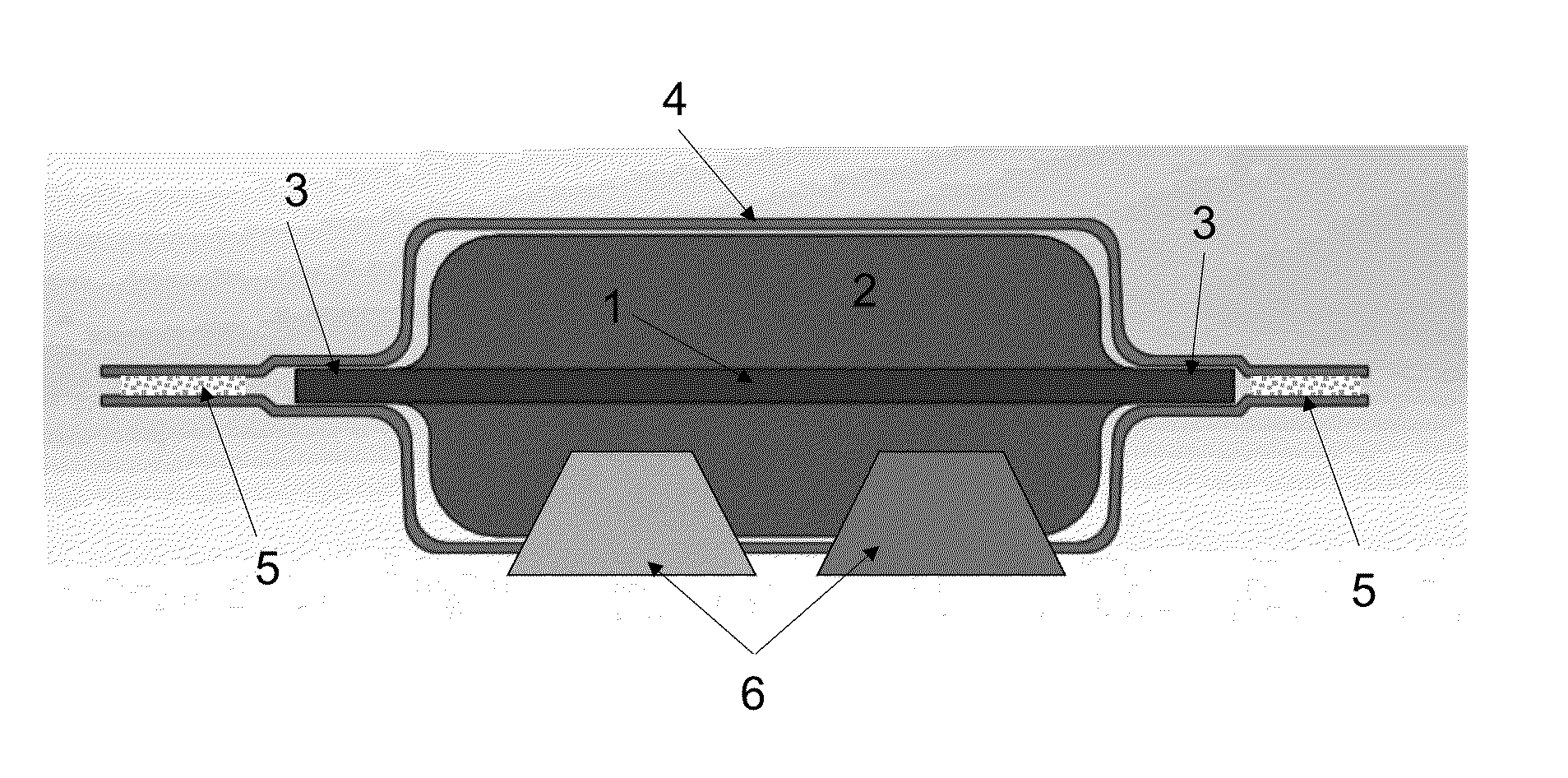Li-ion pouch cell and a cell module
a technology of cell module and pouch cell, which is applied in the field of pouch cell and cell module, can solve the problems of major decrease in cell energy density, difficult to quickly remove heat, and low energy density of pouch cell, so as to reduce the ability to thermally control, reduce the difference in cell temperature, and accelerate the effect of cell cooling
- Summary
- Abstract
- Description
- Claims
- Application Information
AI Technical Summary
Benefits of technology
Problems solved by technology
Method used
Image
Examples
example 1
Construction and performance of a 10 Ah Li-ion Pouch Cell with Internal Thermally Conductive Extensions
[0052]In this example a Li-ion pouch cell of this invention was built. The cathode electrodes were prepared by conventional methods using conventional Li-ion battery materials. The cathode current collector was Al-foil which was coated with a laminate slurry of Li(NiCoMn)O2 or NCM(111) active material, carbon based conductive additive and PVDF binder. Once dry the cathode electrodes were calendared. The anode electrodes were prepared by coating a copper foil current collector with a laminate slurry of graphitic carbon and PVDF binder. Once dry the anode electrodes were calendared. FIGS. 4A) and 5A) show illustrations of the standard cathode and anode electrodes respectively when prepped for cell assembly. The bare foil region at the top of the electrode 1 was used to connect the electrodes 1 to the electrical tabs 6. FIGS. 4B) and 5B) show cathode and anode electrodes respectively ...
example 2
Cooling a 10 Ah Li-ion Pouch Cell with Internal Thermally Conductive Extensions
[0055]In this example the cell of Example 1 was discharged at a ˜2 C rate (20 A) with and without utilizing the thermal extensions to cool the cell while the cell temperature at the face of the cell and at the anode tab 6 of the cell was monitored. Thermocouples were attached to the middle of the face of one side of the cell (D) and to the anode tab (C) of the cell to continuously monitor the cell temperature during cycling. The anode tab temperature provides an indication of the internal temperature of the cell since the anode tab provides a direct thermal connection to the electrode stack 2, and the cell face provides an indication of the overall cell temperature. FIG. 8 A) shows an image of the cell and the location of the thermocouples at the face of the cell (D) and the anode tab of the cell (C).
[0056]For the first test the cell was placed on a thermally insulating surface. No external cooling was us...
PUM
| Property | Measurement | Unit |
|---|---|---|
| charge rate | aaaaa | aaaaa |
| charge rate | aaaaa | aaaaa |
| temperature | aaaaa | aaaaa |
Abstract
Description
Claims
Application Information
 Login to View More
Login to View More - R&D
- Intellectual Property
- Life Sciences
- Materials
- Tech Scout
- Unparalleled Data Quality
- Higher Quality Content
- 60% Fewer Hallucinations
Browse by: Latest US Patents, China's latest patents, Technical Efficacy Thesaurus, Application Domain, Technology Topic, Popular Technical Reports.
© 2025 PatSnap. All rights reserved.Legal|Privacy policy|Modern Slavery Act Transparency Statement|Sitemap|About US| Contact US: help@patsnap.com



